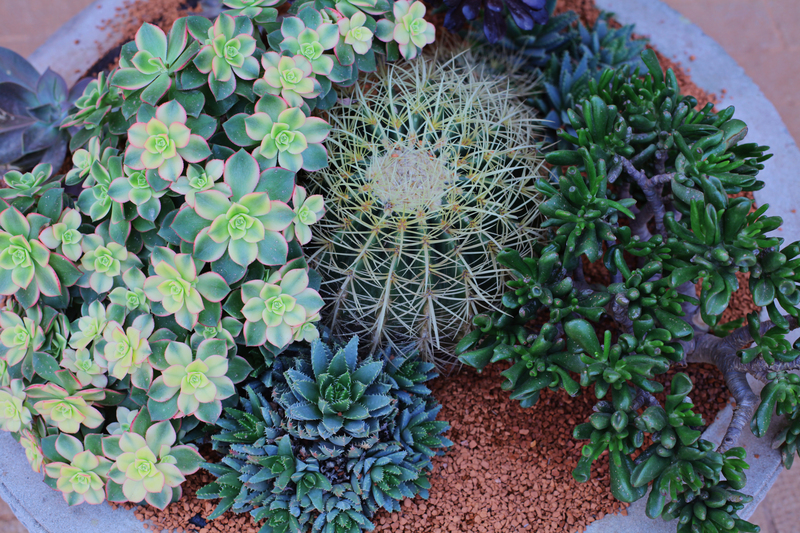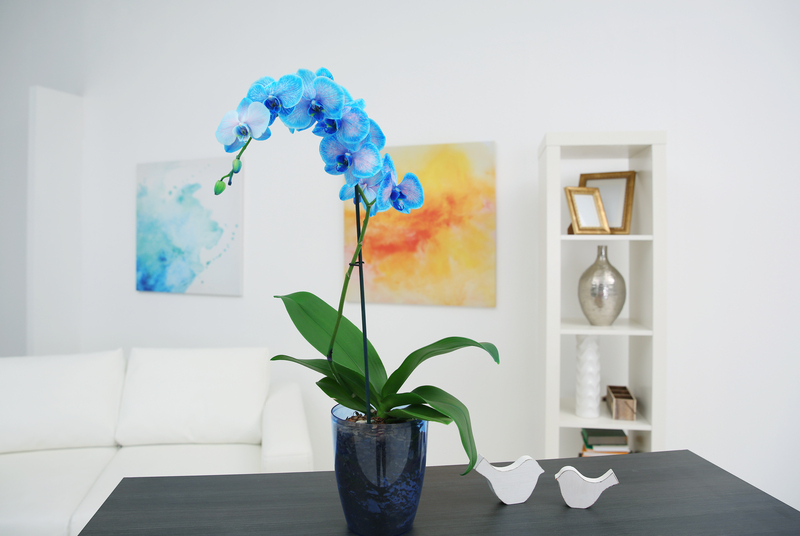Discover the Secrets to Cultivating Your Own Herb Garden
Posted on 07/09/2025
Discover the Secrets to Cultivating Your Own Herb Garden
Are you looking to transform your home with delightful scents and fresh flavors? Growing a personal herb garden is a rewarding, accessible activity--whether you have a vast backyard or a windowsill in a city apartment. In this comprehensive guide, you'll unlock the secrets to starting your own herb garden, nurturing it, and harvesting lush, aromatic herbs all year long.
Why Cultivate a Home Herb Garden?
Cultivating a home herb garden offers more than just fresh culinary ingredients. Herbs add aesthetic appeal, invite pollinators, provide therapeutic benefits, and can even save you money. Growing herbs at home is also eco-friendly, reducing the need for store-bought plastic packaging and travel emissions.
- Freshness: Pluck herbs straight from your garden for intense flavor and nutrition.
- Convenience: No need to rush to the store every time you need basil or mint.
- Therapeutic Value: Gardening relieves stress and connects you with nature.
- Beauty: Herb plants enhance your living space indoors or out.

Secrets to Choosing the Right Location for Your Herb Garden
Where you set up your herb garden can be the difference between thriving, fragrant plants and struggling stems. Pick a location that meets these requirements:
- Sunlight: Most herbs need at least 6 hours of direct sunlight daily.
- Accessibility: Choose a spot close to your kitchen for quick harvests.
- Drainage: Herbs dislike waterlogged roots. Ensure soil drains well or containers have drainage holes.
- Shelter: Protect delicate herbs from strong winds and extreme cold.
Popular options include a kitchen windowsill, balcony, raised bed, or patch in the backyard. Don't let space limit you--container gardening is perfect for herbs!
Essential Tools and Supplies for Herb Cultivation
Starting a herbal garden doesn't demand a shed full of tools. A few key items will ensure your plants get the care they need:
- High-quality potting soil--Choose a light, organic mix designed for containers.
- Watering can or spray bottle--For gentle, even watering.
- Hand trowel--For planting, digging, and transferring seedlings.
- Gardening gloves--To protect your hands from thorns or dirt.
- Pots or planters (with drainage holes) if growing indoors or on patios.
- Fertilizer--Opt for organic, slow-release options.
Advanced gardeners might also use grow lights, propagation trays, and humidity domes, but these aren't essential for beginners.
Picking the Best Herbs for Your Home Garden
Selecting the best herbs to grow at home depends on your climate, taste preferences, and whether you're gardening indoors or outdoors. Begin with easy-to-grow varieties for quick success:
- Basil: Loves the sun and warmth; great for pesto, salads, and Italian dishes.
- Mint: Vigorous and refreshing--perfect in drinks and desserts. (Grow in a pot to contain it!)
- Rosemary: Aromatic and drought tolerant. Excellent for roasted meats and vegetables.
- Parsley: Resilient, nutritious, and widely used in many cuisines.
- Thyme: Hardy and low-maintenance. Great in stews, roasted vegetables, and more.
- Chives: Mild onion flavor for salads and garnishes, easy to grow from seed.
- Cilantro (Coriander): Essential for salsa, curries, and more--with both its leaves and seeds used in cooking.
Other great options for your garden include oregano, dill, sage, tarragon, and lavender. These herbs give both flavor and fragrance to your herb garden.
The Step-by-Step Guide to Cultivating Your Own Herb Garden
1. Decide on Seeds or Starter Plants
Both seeds and starter plants can yield healthy, flourishing herbs. Starter plants offer a head start and are good for beginners, while seeds are more economical and give a larger variety.
- Seeds: Best for fast-growing, easy varieties like basil, cilantro, and chives.
- Starter plants: Ideal for slow growers such as rosemary or thyme.
2. Prepare Your Planting Area
Indoors: Use pots or containers with drainage. Fill them with high-quality potting mix and place near a bright window.
Outdoors: Loosen garden soil, mix in compost, and ensure the area drains well. Raised beds or mounded rows can improve drainage.
3. Plant Your Herbs Correctly
- Depth: Plant seeds to the depth indicated on the packet. Press starter plants into the soil at the same depth as their previous container.
- Spacing: Don't overcrowd! Give each herb enough room--usually 6-12 inches between plants, depending on the variety.
- Water: Water gently after planting. Keep the soil moist, but not soggy.
4. Maintain Ideal Growing Conditions
Watering: Herbs prefer slightly dry to moderately moist soil. Check soil by touch: water only when the top inch feels dry.
Feeding: Fertilize every 4-6 weeks with a light organic fertilizer. Don't overfeed--excess nutrients can reduce flavor intensity.
Pruning & Harvesting: Regularly pinch off tips to encourage bushiness and prevent flowering (bolting), which can make herbs taste bitter.
Remove dead or yellowing leaves to keep your herb garden vibrant and healthy.
5. Watch for Common Pests and Problems
- Aphids and spider mites may appear on tender herbs. Blast them away with water or use insecticidal soap.
- Powdery mildew can develop in humid conditions--ensure plenty of airflow and avoid wetting leaves when watering.
- Root rot is caused by overwatering and poor drainage; adjust your watering routine and use proper soil.
Top Tips for Thriving Herb Gardens
- Rotate your pots regularly so all sides of indoor herbs receive light.
- Mulch outdoor herbs with straw or bark chips to retain moisture and suppress weeds.
- Companion plant herbs with vegetables--basil with tomatoes, chives near carrots--for mutual benefits.
- Label your herbs with plant markers to keep track, especially when starting from seed.
- Grow some herbs year-round indoors using small grow lights or sunny windows.
Best Practices for Harvesting and Using Your Homegrown Herbs
Harvesting is both an art and a science in your home herb garden. Proper methods will keep your plants productive:
- Pick in the morning: Essential oils are most concentrated after the dew dries, giving you the most fragrance and flavor.
- Use sharp scissors: Cut stems just above a pair of healthy leaves to encourage branching.
- Don't strip the whole plant: Never remove more than one-third at a time; this ensures continued growth.
Fresh herbs can be used immediately, or preserved for later use:
- Freezing: Chop and freeze in ice cube trays with a splash of water or olive oil.
- Drying: Hang small bundles upside down in a well-ventilated space out of direct sunlight.
- Infusing: Make herb oils, vinegars, or butters for year-round gourmet flavors.
Unique and Creative Ways to Use Homegrown Herbs
- Tea: Fresh mint or lemon balm makes soothing, fragrant infusions.
- Herbal Salts & Sugars: Blend dried rosemary, lavender, or basil with coarse salt or sugar for gourmet seasoning.
- Spa treatments: Use fresh herbs in bath soaks, skincare, or homemade potpourri.
- Decor: Create herbal centerpieces, wreaths, or drying bundles for rustic charm.
Your herb garden can become a source of beauty, flavor, and health in your home, and the creative possibilities are endless!
Common Mistakes to Avoid in Herb Gardening
- Overcrowding: Plants need space--overcrowded herbs will compete for sunlight and nutrients.
- Excess water: Most herbs prefer to dry out a bit between waterings.
- Ignoring light: Insufficient light leads to leggy, weak plants.
- Letting herbs flower too soon: Remove flower buds off basil, parsley, and cilantro to preserve leaf production.
Be attentive--check your herb garden often, adjust watering as weather changes, and prune regularly for the best harvest.
Frequently Asked Questions About Herb Gardening
1. Can I grow herbs indoors year-round?
Absolutely! Most herbs can thrive indoors with sufficient sunlight or a grow light. Basil, chives, mint, oregano, and parsley are superb choices for a sunny kitchen window.
2. How do I know when to water my herbs?
Stick a finger into the soil--if the top inch is dry, it's time to water. Overwatering is often worse than under-watering. Let the seedlings guide you!
3. What's the easiest herb to grow for beginners?
Mint is almost unkillable and thrives in containers. Start with chives, basil, or parsley for a straightforward, rewarding experience.
4. How do I prevent pests in my herb garden?
Encourage beneficial insects like ladybugs and lacewings, use neem oil, and keep your herbs healthy. Regular spraying with water is often enough to control minor infestations.
5. Which herbs grow best together in one pot?
Group herbs with similar water and light needs. For instance, rosemary, sage, and thyme are drought-tolerant and thrive together; basil likes more moisture and can share a pot with parsley.

The Secret to a Flourishing Herb Garden is Consistency
Gardening isn't about grand gestures--it's about small, regular acts of care. Spending a few minutes each day tending, watering, and harvesting ensures your herb garden is always at its best.
Conclusion: Start Your Herb Gardening Journey Today!
Now that you've discovered the secrets to cultivating your own herb garden, it's time to get your hands in the dirt! With the right tips, tools, and varieties, anyone can experience the satisfaction of growing herbs at home--no green thumb required. Whether you're seeking fresher flavor, a more sustainable lifestyle, or a relaxing hobby, your home herb garden is waiting for you to plant the first seed.
Happy growing!

